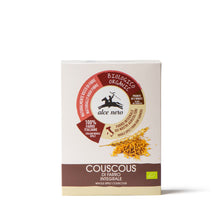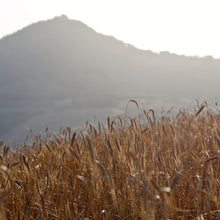The Alce Nero organic whole emmer couscous is made exclusively from 100% Italian emmer.
The Alce Nero organic whole emmer couscous is made exclusively from 100% Italian emmer, cultivated by our farmers. Triticum Dicoccum spelt is one of the oldest cereals grown by man, whose origins date back over 5000 years in the Fertile Crescent. The Alce Nero organic cous cous production process traces its traditional stages of preparation, inspired by how Maghrebi women originally made it at home. It is in fact a mixture of semolina and water, which is then steamed and finally dried with hot air.
The Alce Nero organic whole emmer couscous is naturally rich in fibre, it's ready in five minutes and is ideal when served with stewed meat, boiled vegetables and fish, as in the North African tradition.
It is our commitment to keep all legal information up to date, but you may find differences from the packaging actually available.

Beetroot crêpes with ricotta and avocado cream
Discover recipeFor your recipe
For your pantry
Images and illustrations on this page are purely indicative.



